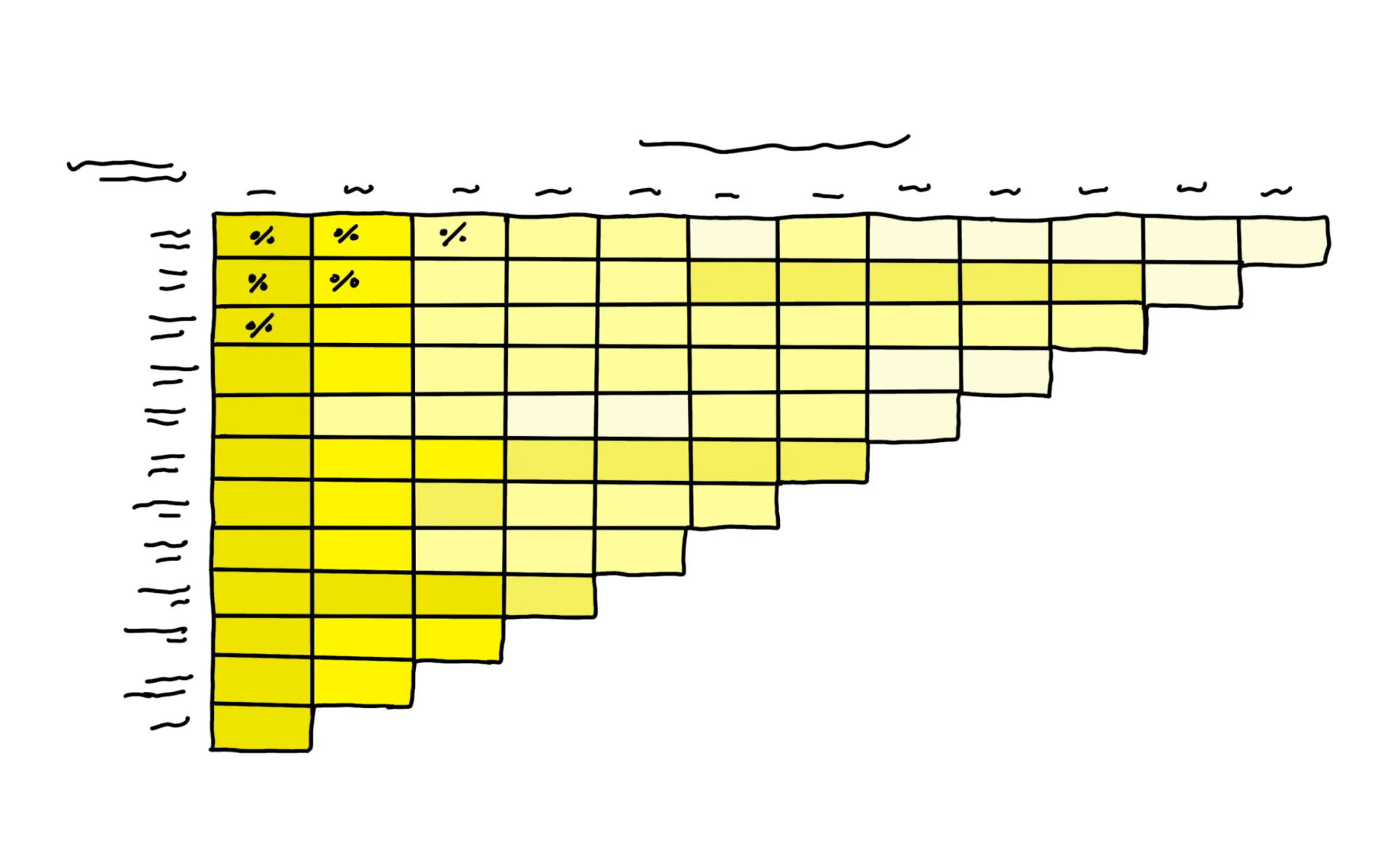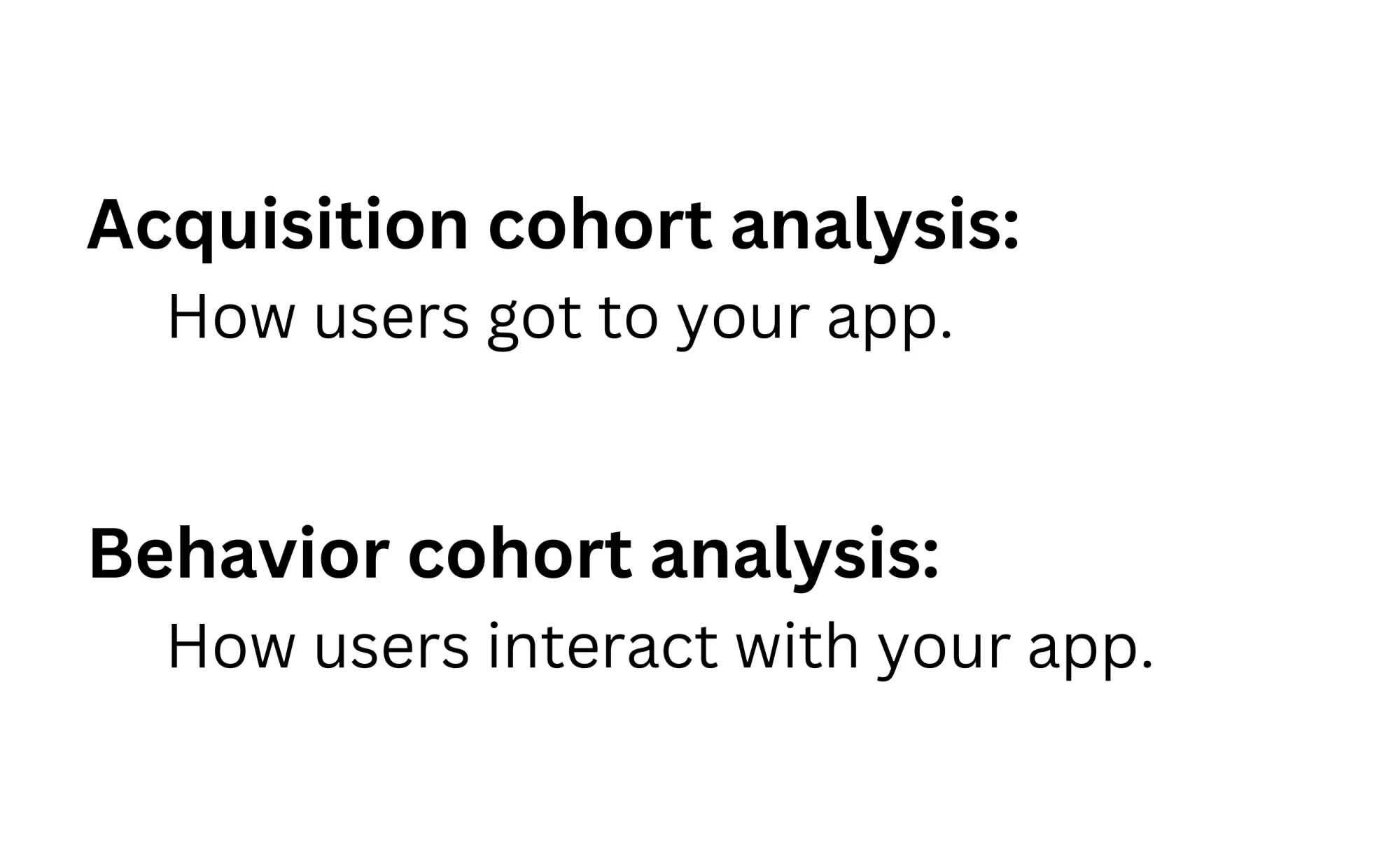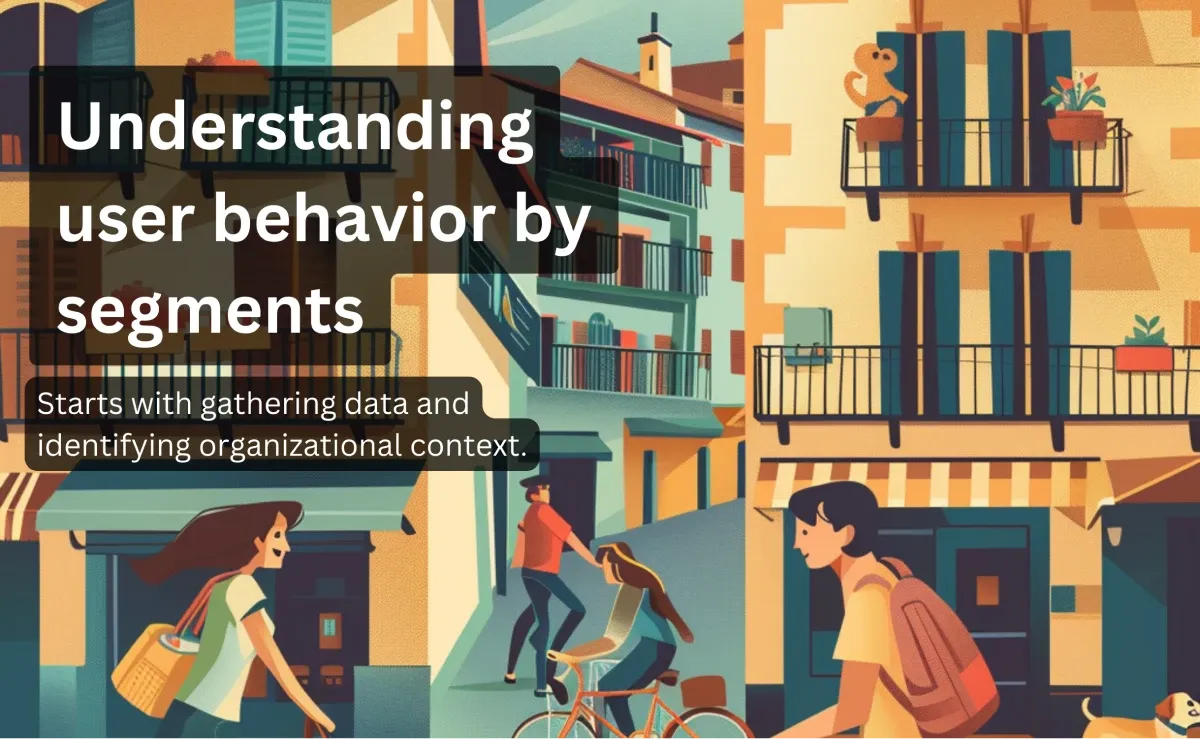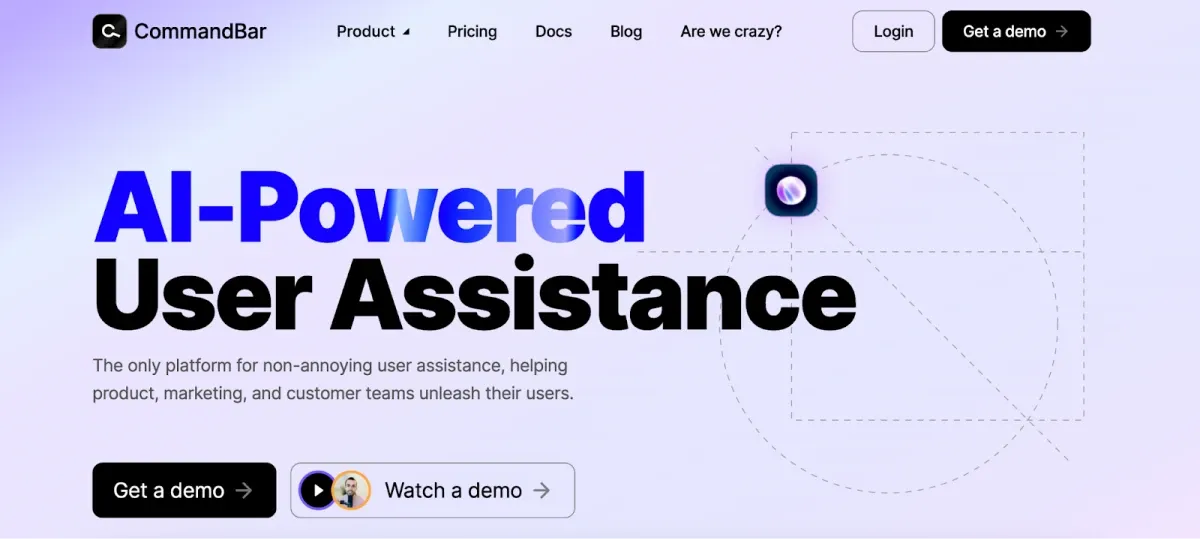How to leverage cohort analysis and actually get results
Cohort analysis helps increase customer retention and adoption. But understanding how to implement it, and knowing which tool to use, makes a difference.

When you visit a walkable city, you become a student.
You observe a middle-aged man sitting at the outdoor cafe sipping an espresso. He’s people-watching—your eyes meet briefly, and you turn away. The dog walker nearby is wrangling six puppies on a leash while the golden retriever on the other leash pulls toward you. Two bicyclists sweep past on your right and nod slightly to you, the oblivious tourist. You start to notice the habits, the culture, and a rhythm to the city.
Customer behavior has its rhythm, too. We follow habits and lifestyles and share personality traits with many audiences worldwide from diverse backgrounds.
Studying these behaviors for our SaaS businesses may feel a bit chaotic, just like your tourist experience. Things move fast, and there doesn’t seem to be a particular order—or at least to you there doesn’t seem to be.
However, you can begin to notice key trends with the right tools to capture insightful cohort data, as well as the context and experience to identify community habits.
These repetitive actions and user behaviors provide essential context for improving your platform, improving the customer experience, and growing your business.
The best way to interpret organizational movement is through a cohort analysis report.
A cohort analysis table helps us make sense of user behavior. The framework identifies common characteristics and helps us create audience segments to better understand and serve SaaS customers. Cohort studies allow companies to improve customer retention and lifetime value.
Then, suddenly, things start to make sense and fall into place.
The habits you once noticed (or missed) now have context, and there are actionable steps you can take to improve.
Back to the walkable city example: The man drinking coffee initially glanced at you after the tasty snack you were holding caught the attention of the golden retriever, which pulled the dog walker and all the puppies off course, causing you to pause smack dab in the middle of the designated bicycle trail, thereby irritating the bike riders and creating a commotion.
Ah, now, there’s the story.
And our new users and existing customers have one, too.
If we learn to leverage our cohort analysis, we can unravel these stories and offer unmatched user experiences through informed audience-segmented insights.
Not a tourist: Understanding cohort analysis like a local

There are two prominent types of cohort analysis tables:
- Acquisition cohort analyses focus on how you acquired your users, where they signed up from, and who they are.
- Behavior cohort analyses focus on how users behave, engage, and interact with each feature throughout the total app experience.
Both types of cohort analysis study user patterns and commonalities and help organize users into categorized groups.
The studies look at how each individual behaves and how they relate to identified distinctions. The goal is to work with user categories with clear attributes so we can better understand our users and offer an improved personalized experience.
Christoph Janz, a venture capitalist with the B2B firm Point Nine, states, “Monitoring usage activity across cohorts can give you early warning signs of potential churn, which is particularly critical for businesses offering annual plans. By catching these red flags early, you can take proactive steps that will hopefully help you rescue at-risk customers.”
We can start by identifying these flags with each particular cohort.
Acquisition cohort analysis
SaaS businesses can identify cohorts by acquisitions. They can identify each acquisition channel and funnel. Companies likely acquire new users from social media, email marketing, their websites, pay-per-click ads, and other standard methods.
Once companies identify these audiences, they can start measuring long-term value. Using these insights, businesses can allocate marketing budgets to higher output channels.
SaaS businesses can also identify seasonal trends in customer acquisition. An acquisition cohort analysis can spot seasonal patterns in sign-ups, such as at the beginning of the year, within a particular date range, or after a popular event. Leaders can then time these trends for their marketing campaigns and product launches.
Mulenga Agley, founder of Growthcurve marketing agency, says of customer lifetime value, “Divide your customers into cohorts based on when they signed up. Track the revenue and churn for each cohort over time. This helps you understand how LTV [lifetime value] differs across cohorts and can reveal trends in customer behavior.”
These practices lead to better optimizing customer onboarding, improving customer lifetime value, and enriching better sales and marketing strategies:
- By examining the performance of different cohorts during the onboarding phase, a SaaS company can fine-tune its onboarding process to improve early engagement and reduce churn.
- Acquisition cohort analysis can help identify which specific cohorts have higher lifetime values, guiding strategies to target similar prospects.
- Understanding which acquisition strategies attract the most profitable cohorts can help a SaaS business refine its sales and marketing efforts for better ROI.
Picture a salesperson meeting a prospect for the first time. She has one initial goal—she wants to find out the context. Does the person need the product? What makes them interested in lending an ear? A great sales rep knows how to act as a guide, revealing the way the product can meet the needs of the prospect.
Acquisition cohort analysis also provides these critical contextual clues: How did the user find you, and why did they initially sign up? We can use these simple but highly informative details to find opportunities for more user growth and offer a better customer experience after sign-up.
Behavior cohort analysis
Knowing how your customer signed up and why gives you additional insight. It’s another way to provide the personal product tour experience, short time-to-value, and engagement initiatives to make them happy and keep new customers for the long haul.
The first way to utilize the behavioral cohort analysis is by identifying the features that drive engagement.
You can study user behavior to locate the features that are most used by the most engaged cohorts. The findings can help focus development efforts on improving or adding similar features.
The analysis also helps customize the user experience. Companies can reveal how different groups interact with your software, enabling personalized experiences that cater to specific needs or usage patterns.
You can implement an upsell and cross-selling strategy as you provide a better experience, add value, and earn trust. Behavioral cohort analysis can identify which cohorts will likely upgrade or purchase additional services, allowing for targeted internal sales campaigns.

In culmination, these actionable insights help predict and reduce churn. SaaS companies can implement proactive measures to retain customers who exhibit similar behaviors by analyzing behavior patterns that precede churn.
Teams can then enhance product development roadmaps. Insights from behavioral patterns can influence the prioritization of new features or improvements in the product development pipeline.
Cohort analysis can foster long-term customer satisfaction and growth
Cohort analysis serves as the backbone of understanding your audience. The key is to collect the right information, analyze it, and implement your findings.
For the best results, companies should adopt a tool that can help gather the information for cohort tables, put it together, and provide the features necessary to implement your new informed strategy.
The right platform can deliver valuable insights regarding user behavior and engagement patterns. Brands can identify friction points to help product teams optimize for intuitive and personalized user experiences. These opportunities are informed by cohort analysis, leading to improved customer retention.
Once you identify common traits and areas for improvement, you can use your user adoption platform to enhance the customer experience.
Businesses can start by using their adoption platform to identify deadends.
Using deadend data to build cohort charts around intent

In “The Power of Habit,” author Charles Duhigg studies organizational habits and how they can change for an entire people group.
In one case, a city had trouble with seemingly peaceful protests that eventually turned violent. Tension would rise, and someone would throw an object that sparked a violent snowball effect. After studying the behavior, the leaders found that food vendors were the problem.
The groups would protest, then get hungry, buy food, and stay longer. Eventually, with enough time for emotions to brew, people would act out.
The solution? The leaders removed the food vendors. After a few hours of protest, the participants got hungry and left the area to eat or rest.
The organizational questions (like people getting hungry at a protest) offer valuable data insights.
SaaS companies can identify these kinds of questions when individuals search for something in your resource hub, spend too much or too little time with a feature, or ask a question to your AI chat assistant because they couldn’t find the answer anywhere else. In other words, an unmet question becomes a deadend.
These deadends help identify potential audience segments for your cohort analysis.
Similar to how Duhigg’s book highlights organizational patterns, you can do the same by analyzing everyday actions. You will definitely find repeat incidents with user behavior and deadends.
For example, you may notice a group of users searching for more detailed information about a particular task within a specific feature.
You can improve that particular experience. Still, it also shines a light on a distinct segment with specific needs that processes information and experiences in a certain way. If you want to analyze specific churn behavior, you can create a customer churn analysis based on cohorts to create specific strategies and improvements.
Using deadend insights, you can classify those users into a group and develop a more personalized experience.
Insights to action: how to leverage cohort analysis for growth
The cohort information feels valuable. It looks important. And you know you should have as much relevant data as possible. But it’s only worthwhile if it leads to action.
A cohort chart is not valuable on its own.
What you can learn from these charts and what you can learn afterward makes the difference.
When you implement your findings, you can set your platform on a trajectory for growth.
When you segment your audiences, linking their needs to your categories is important. In my Command AI article on segmentation, I state, “Needs-based segmentation, a strategy that segments users based on their unique needs and usage patterns, is fundamental to great user experience (UX) and onboarding processes.” And if we can direct our cohort approach with that in mind, we can expect more actionable insight.
This approach goes beyond traditional demographic or industry-based segmentation like age groups or job titles. It dives deeper into the specific requirements, behaviors, and preferences of users.
Common ways you can implement your conclusions include the following:
Personalize the user journey
Some companies develop their onboarding strategy as if people were all identical. If that were the case, then more businesses would be successful at customer adoption. Unfortunately, that’s not so.
Each user has specific needs and a unique journey.
If we can use cohort analysis metrics to identify these audience groups, we can provide a more personalized, data-based journey.
Users should have the option to complete a survey, and using your improved journey signals, you can point them to the right product walk-through. As new users experience your SaaS app, they should have options to skip steps, watch a video, or read a resource instead. You can provide a variety of diverse custom options so they can control their experience driven by unique curiosities.
These improvements are only possible by knowing your target audience segments first. By initiating a cohort analysis to identify these audiences and using the right tool to deploy your strategy, you can provide a better and more effective adoption experience.
Target high-potential users
During your cohort study, you can begin to find different types of audiences that offer promising opportunities. You can identify prospective superfans—users with a higher potential to develop significant customer lifetime value, increase the customer life cycle, and more.
You can spot these individuals and introduce journeys to provide more personal value to each user.
For example, say you spot a certain group of customers with high feature usage and a clear deadend experience focused on squeezing more tasks out of that particular feature. You can then incorporate that information into your product tiers.
You can add more features that expound on the audience’s use case, invite them to try the core feature introduction, and possibly upsell them for the next-level product tier.
There are infinite possibilities to identify those high-potential users, serve their needs, and increase revenue.
Identify churn risks
Cohort analyses can identify audience-specific habits—especially the ones that point to red flags.
To increase user retention rates and tackle your churn rates head-on, cohort insights offer actionable data and observations to improve each per-customer segment. You can preemptively identify churn risks, find existing churn issues, and address each customer experience to eliminate the obstacle.
For example, if you identify users who try a particular feature and then stop using the app immediately afterward, you can start investigating why.
The onboarding journey may have sent them on the wrong path, or their feature expectations need to align with what you offer. You can send surveys, run experiments, and use various methods to understand the situation. The odds are that you will find more than one culture affecting that specific churn, and you can improve the experience on multiple fronts.
Continuously experiment
Finally, and most importantly, cohort analyses help you use data, learn from it, and create a new iteration. You can then experiment and continuously improve.
The B2B SaaS landscape constantly shifts and moves fast. Just look at how AI writing and image creation innovations have changed SaaS brands across every industry in the last two years. That’s why we need to constantly learn and evolve to offer the best product experience possible—no matter the user type.
Everyone gets the personal experience and targeted customer activation they need to see your value and fully adopt the product.
Don’t let valuable user data go to waste: Dive into the power of cohort analysis

So the next time someone brings up a trip to a new country, listen. You’ll learn something new, something you may have never thought of before—and maybe it will inspire a future trip that will bring you memories for a lifetime.
Similarly, cohort analyses offer critical insights to your audiences. They use first-party data straight from the source, allowing you to better understand your customers and provide an improved app experience.
As a SaaS, you can implement your findings and increase customer retention, sucker punch your churn rate, and scale your platform.
But first, you need a tool that can gather your data, put your insights into action, and create an unmatched customer experience—an all-in-one solution.
Because how you implement your cohort analysis learnings is just as important. Annoying, intrusive popups won’t point users to the correct feature—your cohort’s insights will backfire on you. Instead, a feature like Command AI’s nudges offers a natural, friendly way to point users in the right direction.
With the premier AI-powered user assistance platform, you can add checklists for a unique and personalized journey—with many alternative forms of engagement for every kind of user. When someone logs in, you can start with a survey to find out exactly what they want to use your app for, and then you can give it to them right away and shorten the time-to-value.
As you identify different audiences and learning types, you can serve new and existing customers with other experiences such as a resource hub, chat assistance, universal search, and more. The opportunities are endless when you can better understand your users and offer an improved experience.
You can use cohort analyses today with cohort identifiers to become your users’ ultimate students. Then, with a user assistance platform, you can put your plan into action for an increased user retention rate and high-potential growth.
